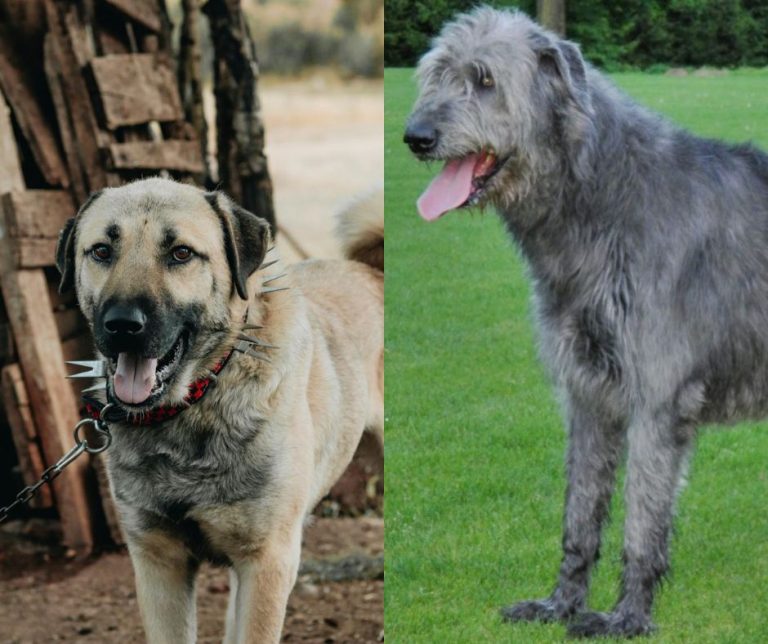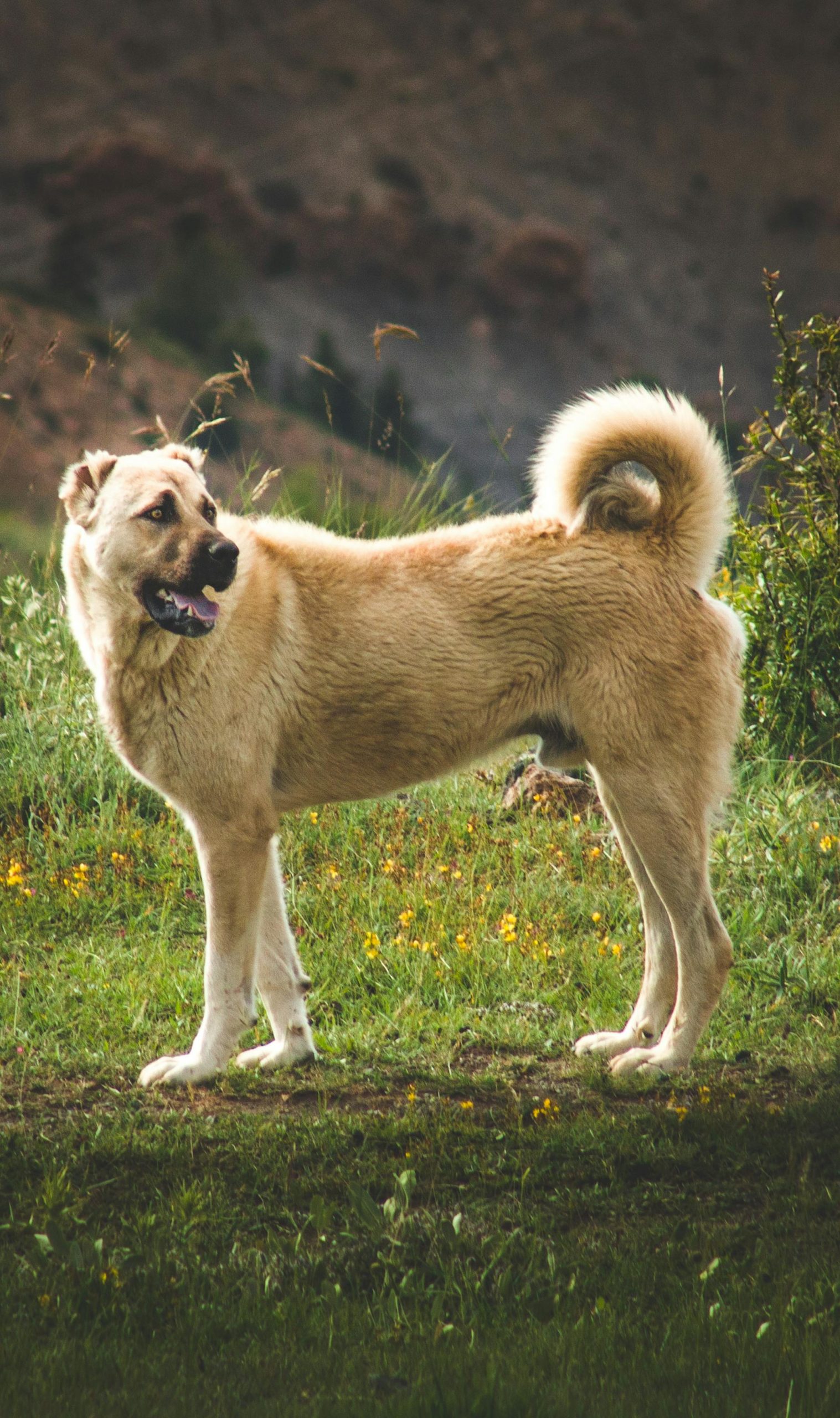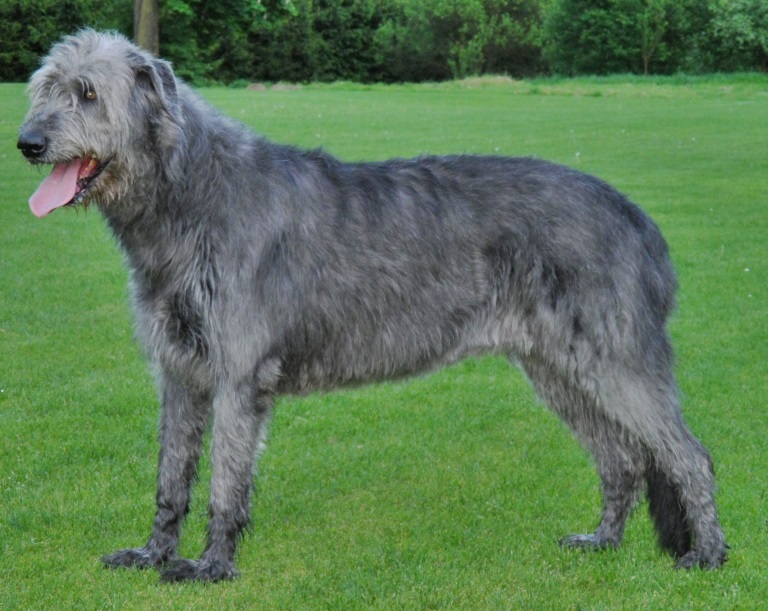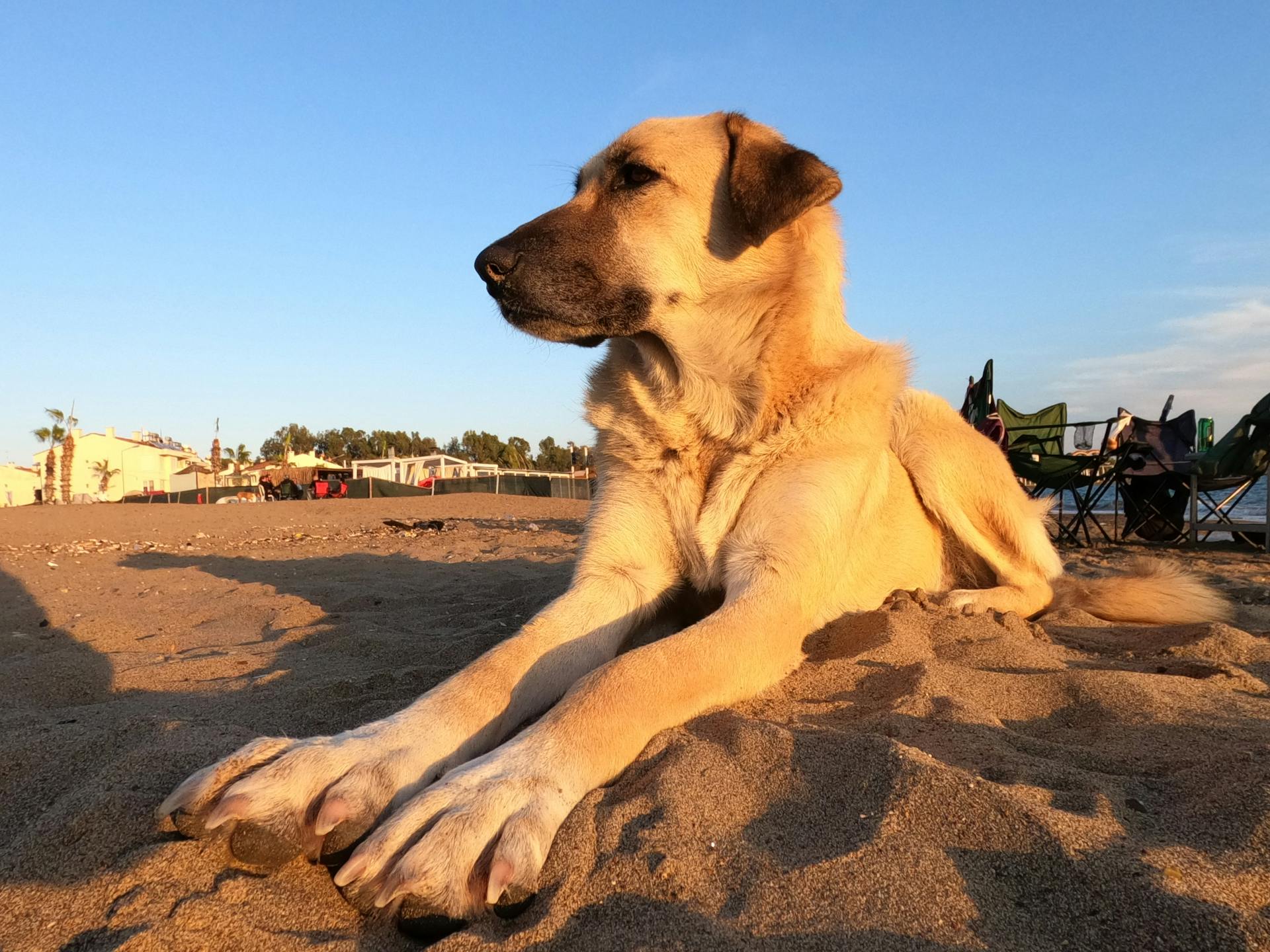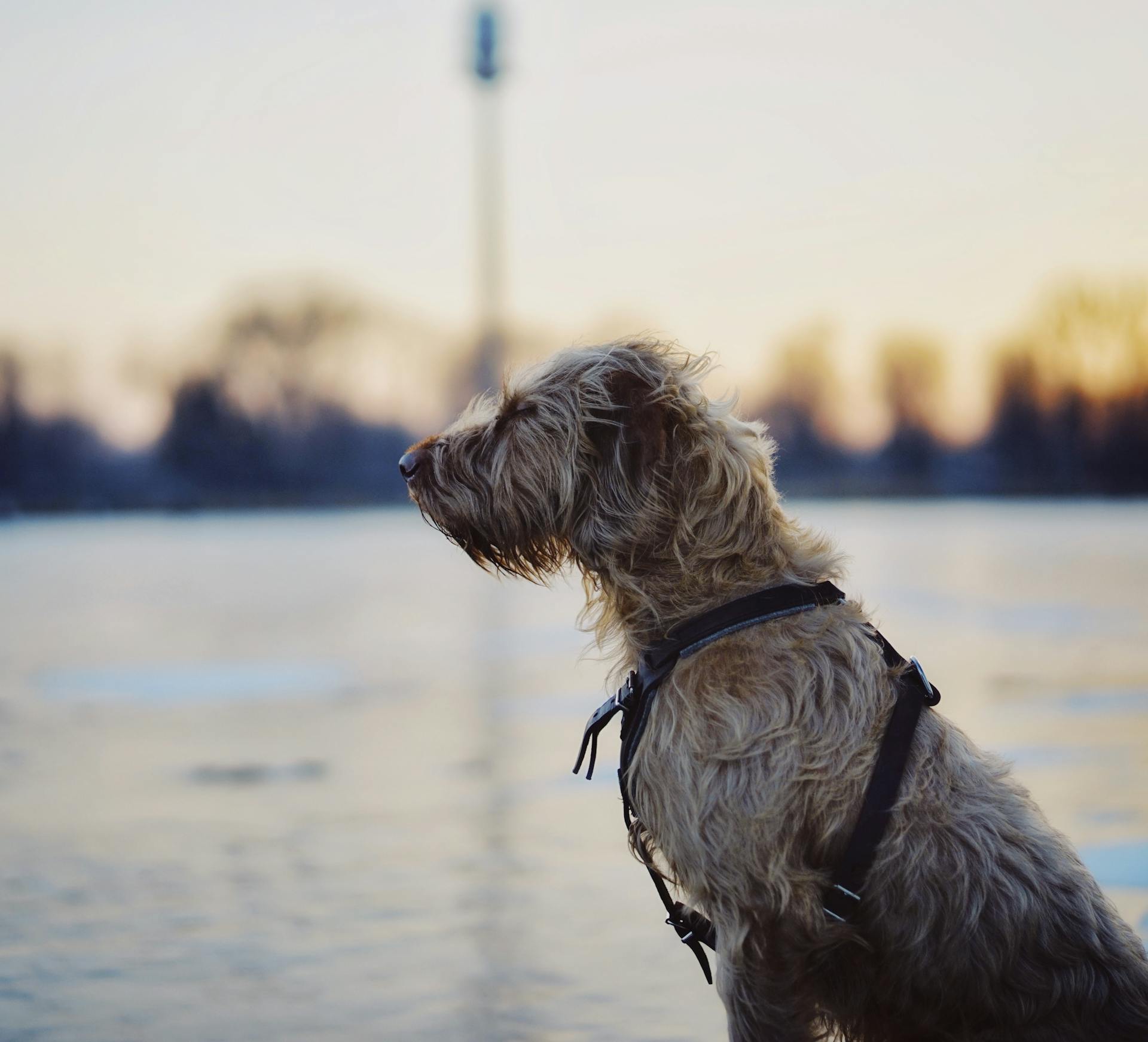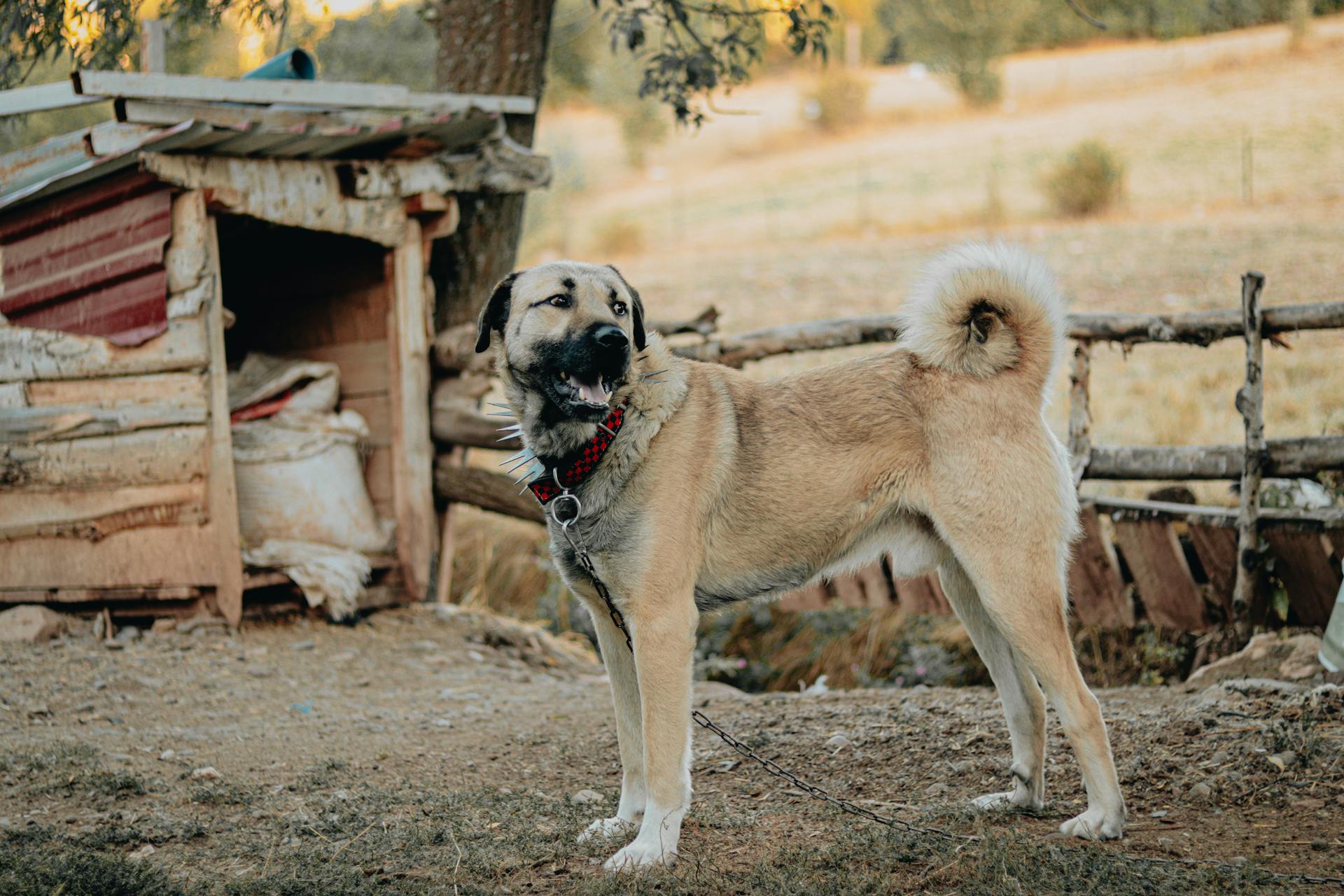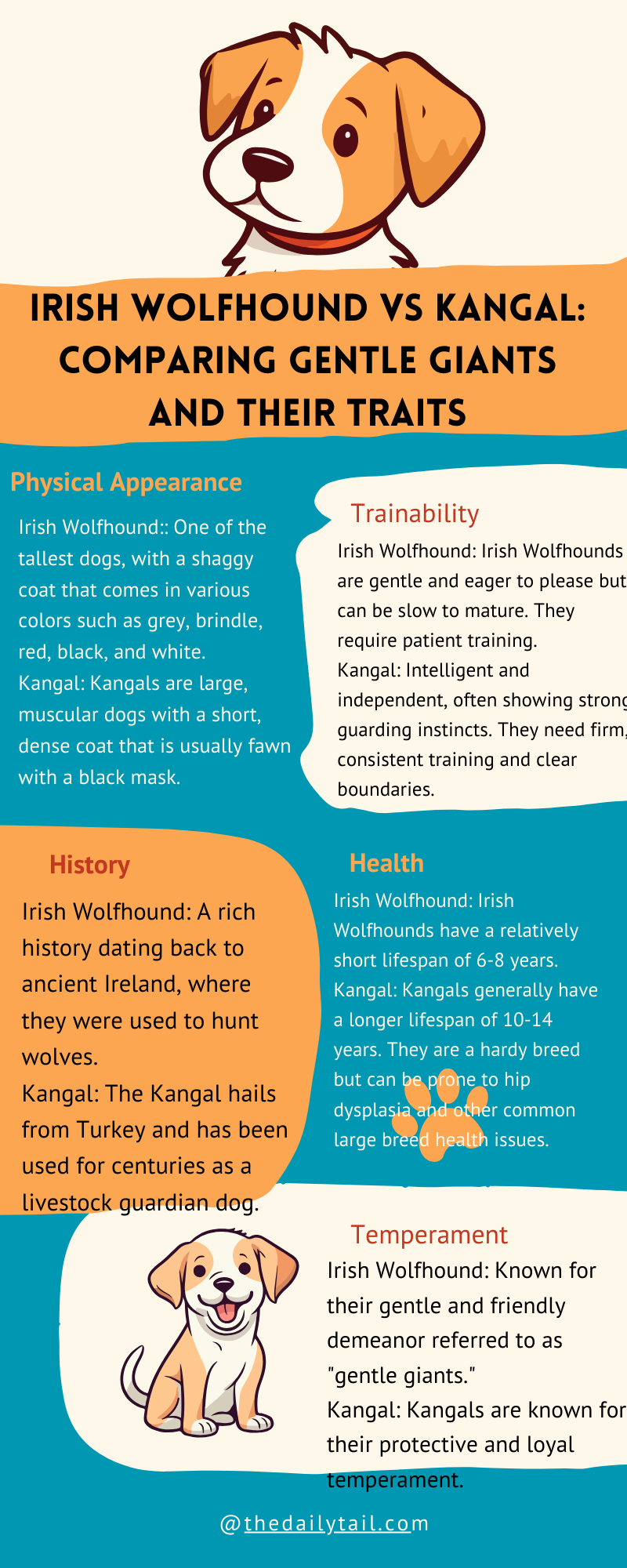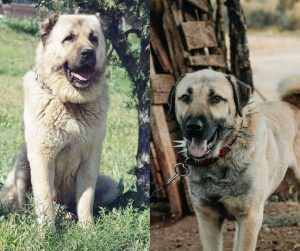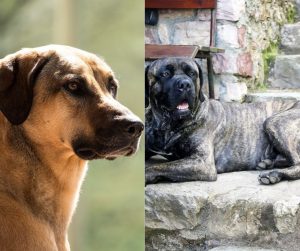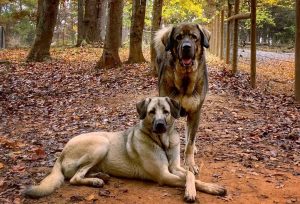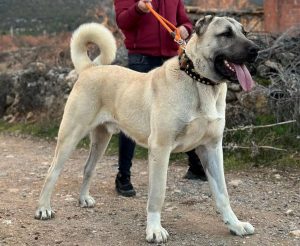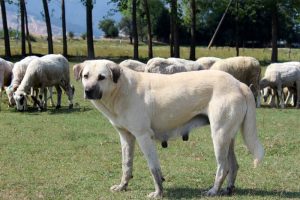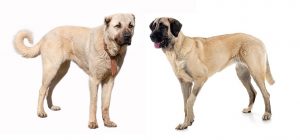Here is a fun fact. When you look at these two giant dog breeds, you might think, what great guardians. But while one of these large dogs was bred to protect, the other was bred to hunt. Irish Wolfhounds have close to zero protective and guardian instincts. And Kangals do not hunt, they just watch the livestock. So, what do we know about Irish Wolfhound vs Kangal breed comparison?
So, while their purpose is different, some pet parents and dog enthusiasts still cannot decide which one to get. Today, I will try to help you. As a long-time dog owner, I know that it is not easy to make a final choice on your next breed. At first glance, you might think these are two similar large dogs. But they cannot be more different.
The Irish Wolfhound, with its origins in Ireland, carries a noble history as a hunter of large game, including wolves. Known for its towering stature and gentle disposition, this breed combines power with grace.
In contrast, the Kangal originates from Turkey, esteemed for its prowess in guarding livestock against formidable predators like wolves and bears. This breed is characterized by its strength, protective instincts, and impressive endurance.
Both breeds share traits like majesty and courage, yet their distinct lineages and historical roles have shaped unique attributes in each.
Size-wise, they stand close in height, but the Kangal tends to have a more robust build.
Speaking of personality, both breeds are reliable and have a steady temperament. Yet, the Kangal is known for its vigilance and territorial nature, contrasting the more serene and friendly Irish Wolfhound.
Prospective owners must weigh these characteristics alongside factors such as lifespan, health, and maintenance, to identify which breed aligns with their lifestyle and expectations.
Key Takeaways
- The Irish Wolfhound and Kangal are large breeds renowned for historical roles in hunting and protection
- They differ in temperament; the Irish Wolfhound is serene, while the Kangal is vigilant and territorial
- Potential owners should consider personality, health, lifespan, and care requirements in their decision
Breed Origins and History
Whenever we talk about comparing dog breeds, I say we have to start from the beginning. The same applies to Irish Wolfhound vs Kangal. Both of these dogs come from the European continent, but opposite sides of it. Let’s explore their origin.
Irish Wolfhound
The Irish Wolfhound is a breed enveloped in antiquity, with a history that begins in Ireland. Records and lore agree that the breed has existed since 391 A.D., with Roman Consul Aurelius often credited with receiving the first seven of these grand dogs as a gift.
They occupy a revered position in Irish history, often associated with nobility and used primarily for hunting wolves and guarding homes and livestock. Their prowess as hunters was so renowned that their name itself reflects their skill-set.
Kangal
On the other hand, the Kangal hails from the rolling hills and rugged landscapes of Sivas in Turkey. Their heritage dates back several centuries, with an origin shrouded in the mists of rural Sivas, where they were bred by shepherds to protect flocks against formidable predators such as wolves and bears.
Known for their strength and protective instincts, these dogs are considered national treasures in Turkey, embodying a blend of independence and loyalty. Their presence in pastoral life is so fundamental that one might say they are as intrinsic to the Turkish countryside as the sheep they guard.
Nowadays, a lot of people also mistake the Turkish Kangal for the Anatolian Shepherd. They might be similar, and the American Kennel Club recognizes as same. Yet, they are different. The United Kennel Club makes a clear distinction between a Kangal Shepherd and Anatolian Shepherd.
Physical Characteristics
When considering the Irish Wolfhound and the Turkish Kangal Dog, their impressive physical characteristics define their breeds. They each possess unique attributes that cater to different needs and environments.
Size and Weight
The Irish Wolfhound stands tall with males typically reaching 32-34 inches in height, while their weight is usually within the 140-180 pound range. They’re one of the tallest breeds, embodying the very essence of a gentle giant.
In contrast, the Kangal Dog has a more robust build, with males averaging around 30-32 inches tall and a heavier weight range between 110-140 pounds.
Coat and Colors
The Irish Wolfhound sports a double coat ranging from rough to medium in texture, which helps in harsh hunting conditions. Their coats come in a variety of colors including white, gray, brindle, black, red, and fawn.
The Kangal Dog, hailing from Turkey, has a short and dense coat, providing protection against harsh climates and predators. Colors tend to be limited, with shades of tan and a black mask being the most characteristic.
Distinctive Features
Both breeds have easily recognizable features. The Wolfhound’s size is its most defining trait, towering over many other breeds and is matched with a noble and commanding presence.
The Turkish Kangal Shepherd, known for its strength, has a powerful head and a strong neck that’s essential for its traditional role in guarding livestock from predators. Their vigilant and protective nature is reflected in their sturdy body and alert stance.
Temperament and Personality
Choosing a dog that fits into family life is important. An understanding of the Irish Wolfhound and Kangal’s temperament reveals their suitability for family environments, the warmth they offer, and the distinct protective instincts they possess.
Irish Wolfhound Temperament
The Irish Wolfhound, regarded for their gentle nature, flourishes in a family setting. They are known for their loving and friendly personality, making them excellent companions for both adults and children.
Intelligence is a hallmark of the breed, along with an enduring patience that endears them to all. They usually exhibit a calm demeanor, rarely displaying aggression or hyperactivity.
This breed might be a giant in size, but they’re just as big-hearted when it comes to their families.
Kangal Temperament
Protection is a word often associated with the Kangal. They are independent and highly alert, natural guardians that are protective of their home and loved ones.
Despite their loyal nature, they can sometimes come across as aloof, especially with strangers, due to their strong protective instincts.
Their intelligence means they respond well to training, which should focus on channeling their territorial instincts positively.
The Kangal’s temperament suits an owner who appreciates a dog that is both a vigilant watchdog and a steadfast family member.
Health and Lifespan
When it comes to the Irish Wolfhound and the Kangal, their health and how long they might grace your home are important factors to consider.
The Irish Wolfhound tends to have a shorter lifespan, averaging around 6-10 years, while the robust Kangal fares better with 12-15 years under its collar.
Knowing common health issues and how to provide preventative care could make a world of difference in their lives.
Common Health Issues
Irish Wolfhound:
- Bloat (Gastric Dilatation-Volvulus): A life-threatening stomach condition that requires immediate veterinary attention
- Hip Dysplasia: A genetic hip malformation that can cause pain and arthritis
- Dilated Cardiomyopathy: A heart condition leading to weakened pumping ability
- Osteosarcoma: A type of bone cancer more common in larger breeds
- Progressive Retinal Atrophy: An eye disease leading to blindness
- Liver Shunt: An abnormal blood flow affecting the liver’s ability to detoxify
- Fibrocartilaginous Embolic Myelopathy: A spinal condition that can cause sudden paralysis
Kangal Dog:
- Hip Dysplasia: As with the Wolfhound, this can be an issue given their size
- Elbow Dysplasia: Similar to hip dysplasia but affecting the elbows
- Dilated Cardiomyopathy: They may also develop this heart disease
- The Kangal’s thick coat requires regular care to avoid skin issues
Both breeds can exhibit a sensitivity to certain drugs due to their size and breed-specific reactions.
Preventative Care
Preventative care is key in maintaining the health of these gentle giants.
Regular check-ups with the veterinarian can catch health issues before they become severe.
Here’s what guardians can do:
- Consistent Vet Visits: Yearly exams to monitor heart health, joint conditions, and eye health
- Appropriate Diet: To minimize the risk of bloat and obesity, which can worsen joint problems
- Regular Exercise: Keeps their joints limber and hearts strong but should be tempered to avoid stressing their large frames
- Grooming: For Kangals, brushing their coat regularly can prevent skin issues
Care and Maintenance
When it comes to the Irish Wolfhound and Kangal Dog, they each have their unique care and maintenance needs. From their diet and nutrition to the amount of exercise they require, owners should be prepared for their distinct grooming needs as well.
Diet and Nutrition
The Irish Wolfhound, with its towering stature, needs a diet that’s rich in nutrients to support its large frame and energy requirements.
A balance of protein, fat, and carbohydrates should be maintained, alongside essential vitamins and minerals.
They might not drool as much as other breeds, but keeping their nutrition adequate can help prevent other health issues.
On the other hand, the Kangal Dog, renowned for its protective nature and strength, requires a diet that sustains its muscular build and high energy levels.
Owners should consider foods that support joint health due to the Kangal’s heavy build.
- Irish Wolfhound: Balanced diet with controlled portions to prevent bloat
- Kangal: High-quality, protein-rich diet to maintain muscle mass
Exercise Needs
Irish Wolfhounds may seem imposing, but they also have a surprisingly gentle nature which is reflected in their exercise needs.
They require regular walks and the chance to stretch their legs in a safe area.
Moderate exercise is key; too much can harm their fast-growing joints, especially as puppies.
Kangals have high energy levels and thrive on having a job to do, such as guarding livestock.
They benefit from both physical and mental stimulation to keep them from becoming bored and developing behavioral problems.
Grooming
Grooming the Irish Wolfhound is relatively straightforward. They have a short coat that only requires minimal brushing to remove dirt and loose hair. However, shedding can be moderate.
Meanwhile, Kangal Dogs, with their thick double coats, shed more heavily. Therefore, they require regular grooming to prevent matting. Both breeds should have their nails trimmed regularly, and ear checks are a must to prevent infection.
With the Kangal, extra attention should be paid to brushing during shedding seasons to maintain coat health.
- Irish Wolfhound: Weekly brushing; light to moderate shedding
- Kangal: Frequent brushing; heavy shedding
Training and Socialization
When it comes to dog training, both Irish Wolfhounds and Kangals are intelligent breeds. That being said, they each have their unique challenges.
Irish Wolfhounds, with their gentle dispositions, respond best to training that is consistent and uses positive reinforcement. Because they can be quite sensitive, it’s important not to use harsh methods.
This breed’s high prey drive means that one should ensure a strong recall is established, especially in areas where they might be tempted to chase.
On the other hand, Kangals are known for their protective nature. They are naturally territorial and make dependable guardians.
When training a Kangal, it’s essential to focus on obedience and socialization from a young age. This helps to ensure they can distinguish between normal and threatening situations, particularly if protecting livestock or their home.
Both breeds need early socialization to coexist peacefully with children, other pets, and dogs.
It’s recommended to expose them to varying situations, people, and animals to foster well-rounded behaviors.
| Breed | Trainability | Socialization Needs | Sensitive | Prey Drive |
|---|---|---|---|---|
| Irish Wolfhound | High; responds well to positive reinforcement | High; should start early to manage prey drive | Yes | High |
| Kangal | Moderate; requires firm, consistent training | High; essential due to protective instincts | Moderate | Moderate |
Breed Comparison and Suitability
Let’s finish off with a short summary of breed comparison between Irish Wolfhound vs Kangal Shepherd Dog. These two stand out as giants with distinct characteristics and temperaments, making them suitable for different family dynamics and living environments.
Similarities and Differences
Similarities:
- Both breeds are large and commanding in presence
Differences:
- Size: Irish Wolfhounds are generally taller, with males reaching 32-34 inches, whereas Kangal males stand around 30-32 inches
- Weight: Kangals are heavier, tipping the scales at 110-140 pounds. Irish Wolfhounds typically weigh between 140-180 pounds
- Temperament: Irish Wolfhounds are known for their gentle and friendly nature. Kangals are protective and strong, often used for guarding livestock
- Living Environment: The Wolfhound needs space due to its size but can adapt to various homes if they get enough exercise. Kangals require room to roam, like a large yard, and are not well-suited to apartment living
Choosing the Right Fit
When selecting between these breeds, one should consider their lifestyle and what they seek in a dog companion:
- Family and Pet Friendliness:
- Irish Wolfhounds are amiable and tend to be child-friendly, making them fit for a family setting
- Kangal Dogs, while also capable of forming strong family bonds, have an instinct to guard and might be less suited for homes with many pets or young children
- Stranger Friendliness:
- Irish Wolfhounds often greet strangers with a wagging tail
- Kangal’s protective nature may make them reserved or cautious around unfamiliar people
- Exercise Needs & Personality:
- Irish Wolfhounds enjoy a good run but will also cherish downtime at home
- Kangals possess a vigilant personality and require regular, vigorous activity to satisfy their working dog instincts
Ownership Insights
Choosing between an Irish Wolfhound and a Kangal means considering both breeds’ distinct needs and lifestyles. Owning either of these dogs comes with unique responsibilities and joys.
Living with an Irish Wolfhound
Owning an Irish Wolfhound is akin to having a gentle giant as a companion. They suit a lifestyle that can accommodate their large size and their need to stretch out — they’re not the best fit for an apartment setting.
They do well in a home with a large yard, where they can roam freely. As a breed originally used for hunting, the Irish Wolfhound enjoys exercise, but they’re also happy to relax by their owner’s side.
Due to their hunting background, a securely fenced area is important to keep their chasing instincts in check.
These purebred dogs are known for their sweet nature, making them wonderful family pets. Although they may watch over their home, they’re more lovers than protectors.
- Living Environment:
- Requires spacious indoor living and a large, securely fenced yard
- Exercise:
- Regular but moderate exercise is vital
- Temperament:
- Known for being calm, dignified, and affectionate
Living with a Kangal
Kangals, on the other hand, are a more traditional choice for those seeking a guardian or herding dog. They are powerful protection dogs and are instinctively watchful and protective of their family and territory.
Kangals are not well-suited to apartment living due to their size and need for physical activity. A rural or suburban home with ample outdoor space is ideal for these dogs.
While they are known to be gentle with their family, especially children, they take their role as guard dogs seriously. They often patrol the boundaries of their property and stay alert to potential threats.
- Living Environment:
- Prefers a home with a significant amount of land or a large, secure yard
- Exercise:
- Has high exercise needs; requires daily physical and mental stimulation
- Temperament:
- Is loyal, protective, and strong-willed; can be independent but also affectionate with their family

